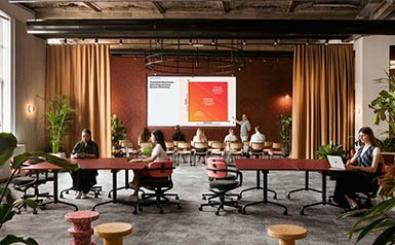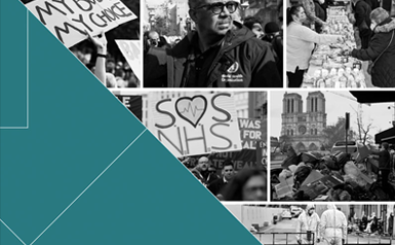This post is the text, condensed, of a talk Philip Trippenbach gave at the DMX conference in Dublinon 9 March 2016.
If you’re reading this, you probably got to it through an algorithm – either someone shared it on a social network, or you got to it through search. Either way, an algorithm decided that this was what you wanted to see.
More and more of what we see and read comes to us algorithmically. That’s one of four trends that are now profoundly changing the way information travels through society.
And when you take them together they have a surprising dark side.
Trend 1: Algorithms define our information flow.
Check out these findings from the Edelman Trust Barometer research:
Source: Edelman Trust Barometer 2016.
Algorithmic, peer-driven media – search and social – is now the main course of our information diet. Two of the top three media sources we use are based on what we want to see.
Search answers our questions. Social media shows us content that our friends are sharing, and what the platforms think we’ll like.
And things get even more interesting when you look at how trust varies across sources:
Source: Edelman Trust Barometer 2016.
Search engines don’t create any content of their own of course. They just point you to information from the other four sources. So, you’re more likely to trust a news story if you find it as a result of a search than if you go to the homepage directly.
Why is this?
Well, there’s a very well-known psychological fallacy called confirmation bias that explains this nicely. You’re more likely to believe information that agrees with whatever you already think. You’re more likely to distrust, or simply ignore, information that doesn’t fit your prejudices.
The ubiquity of algorithmic content delivery means that, increasingly, people are only seeing the information they want to see. And they trust it more.
Trend 2: Trust is moving away from elites.
We’re seeing that more and more, peer and expert networks are more respected than official sources.
Source: Edelman Trust Barometer 2016.
In general, people trust peers and experts more than official representatives of a company. This means authenticity is becoming more and more important – and consequently so are communications mediated through personal relationships.
Trend 3: People are protecting their attention.
As the volume of content we’re exposed to rises, people are being more selective in what they see.
The rise and rise of adblocking is a symptom of this.
Source: Pagefair/Adobe report, 2015.
We can no longer reach people effectively by interrupting their content experience through advertising.
We have to give them the content they want to see.
And it has to be good.
Trend 4: All this is changing the decision process.
When considering taking an action or making a purchase, people on average do 12 searches before engaging on a specific brand’s site.
Today’s buyers might be anywhere from two thirds to 90% of the way through their journey before they reach out to a seller.
So not only are people getting most of their information generally from search and social algorithms – but in the decision journey, these trends are magnified still further.
If you’re not appearing in the awareness or consideration phases, when the content people are seeing is mediated by search and social algorithms, you’re missing out.
So where does this leave us?
We live in media bubbles. And they’re hardening.
Like a soap bubble in a Canadian winter, our once-fluid media horizons are crystallizing into an algorithmically-defined landscape of beautiful thoughts and opinions, all similar to the ones we already have.
In his 2011 book The Shallows, Nicholas Carr argued that the internet is reducing our ability to think deeply.
But it isn’t the shallows we need to worry about.
It’s the narrows.
If you’re a communicator, it should be really easy for you to assemble a community of like-minded people. But how do you grow your idea to new people? How do you reach new potential customers? How do you spread excitement and engagement to people who don’t even know you exist yet?
Because that’s your real challenge.
And it’s a challenge that we are solving every day for our clients.







